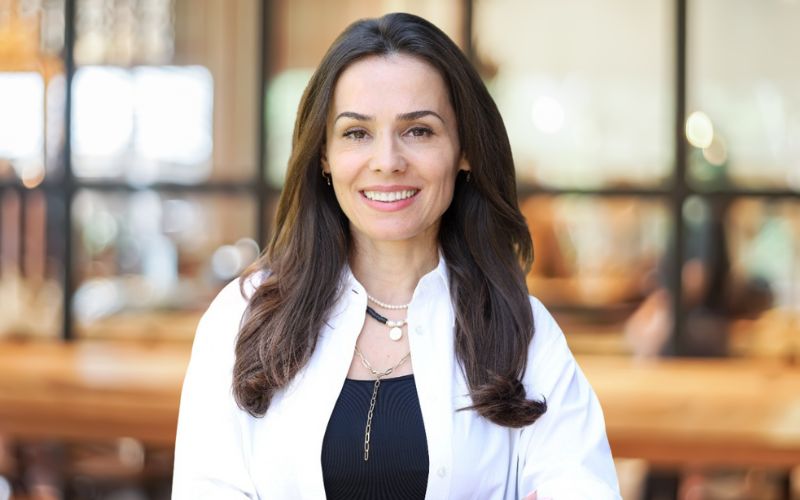Mark Atterby, Editor of CXFocus, recently interviewed Ledi Lapaj, Director Customer Experience Bank-al-Etihad, who is the international keynote speaker for the CX Retreat in October. Ledi explains the customer centric journey the bank has been on, highlighting the six pillars of CX transformation that an organisation needs to become customer-centric.
Mark Atterby (MA): Can you please provide a background to your career and an overview of your role at Bank-al-Etihad?
Ledi Lapaj (LL): I’m currently part of the dedicated team at Bank al Etihad in Jordan. We’re committed to providing exceptional customer experiences and continuously evolving to meet the needs of our customers. As a leading financial institution in Jordan, Bank al Etihad has successfully transformed from a small challenger to a major player in the market.
Throughout my career, I’ve held various customer-focused roles in different industries and countries. This experience has shaped my understanding of customer needs and how to deliver value. I’ve transitioned from focusing solely on revenue growth to prioritizing the overall customer experience. My team and I work collaboratively to ensure that our strategies align with the evolving needs and expectations of our customers.
MA: Over your career, what has been the most important lesson you have learned about customer experience? How have you applied that lesson in your current role?
LL: The most valuable lesson I’ve learned about customer experience is that it’s rooted in people and company culture. While frameworks and systems are important, the actual customer experience is shaped by the individuals within an organisation. Cultivating a culture of empathy, innovation, and collaboration yields far better results than simply implementing new ideas or improvements. Investing in your team pays off in the long run.
Another key insight is that customer experience isn’t owned by a single department. It’s influenced by everyone in the company, directly or indirectly. This understanding has led me to focus on empowering more employees and partners to contribute to our customer-centric goals.
When people feel empowered and understand their role in the broader context, they’re more creative, committed, and willing to go the extra mile. Effective communication is essential to ensure everyone is aligned and motivated to deliver exceptional customer experiences.
MA: What does CX success look like for Bank-al-Etihad?
For Bank al Etihad, CX success means delivering a consistent, personalised experience that meets and often exceeds customer expectations. It’s about ensuring that every interaction is smooth and meaningful, leading to moments of satisfaction that reinforce our customers’ trust in us. This focus on customer experience also positively impacts our employees, as their ability to provide great service is closely tied to their own experience within the organisation.
Success in customer experience is achieved when our customers feel genuinely valued and supported at every stage of their journey with us. Central to this success is a culture that emphasises practical empathy, continuous improvement, and teamwork. When our employees understand their role in delivering our customer-centric goals and have the tools they need to do their jobs effectively, they can provide the kind of service that truly resonates with our customers.
Ultimately, CX success at Bank al Etihad is measured by tangible outcomes like increased customer loyalty, positive feedback, and a strong reputation as a reliable financial partner. It’s about building practical, long-term relationships where customers see us as a dependable partner in achieving their financial objectives.
MA: What are the six pillars of CX transformation?
LL: We have a comprehensive framework in place to ensure that customer centricity is deeply embedded and truly transformational, rather than just a surface-level effort. One of the critical pillars of our CX transformation framework is the development of a robust customer experience strategy (I). This involves clearly articulating the customer promise and aligning it with the company’s overall strategy, securing stakeholder buy-in to drive meaningful change. At the heart of this framework is cultivating a customer-centric culture (II), where every decision and interaction is centered on meeting customer needs. This culture is reinforced by a strong Voice of the Customer (VoC) program, which systematically captures and acts on customer feedback.
Understanding customers (III) is another essential pillar, serving as the foundation for effective experience design and innovation. By deeply analysing customer needs, preferences, and behaviours, we can prioritise improvements, design relevant offerings, and drive innovation. This understanding is derived from a combination of direct feedback, behavioural data, and empathy-driven insights. With this foundation in place, experience design (IV) becomes an ongoing process of continuous improvement, where customer journeys are mapped to identify pain points and opportunities for enhancement. This iterative approach allows us to stay ahead of evolving expectations, introducing new features, services, and touchpoints that add value and strengthen customer loyalty.
Measurement and metrics (V) play a crucial role in tracking the effectiveness of these efforts, ensuring that CX initiatives are aligned with business outcomes. Equally important is recognising the impact of employee experience on customer satisfaction; engaged and well-supported employees are vital to delivering exceptional service. Finally, governance and accountability (VI) ensure that CX efforts are well-coordinated and consistently executed across the organisation. Together, these pillars form a comprehensive approach to customer experience, driving long-term loyalty and business success.
MA: How have they helped Bank-al-Etihad achieve its vision for CX success and business objectives?
LL: Customer centricity, like any other aspect of business growth, is constantly evolving. It’s not a final destination but an ongoing process of improvement. It’s a mindset and philosophy that drives both our day-to-day operations and our long-term objectives. Recognising this, we are continually progressing toward our vision for CX success.
We’ve already seen significant improvements. Our customer-centric culture has become more deeply embedded, with employees showing a greater awareness of the importance of putting the customer first. There’s better alignment across the organisation, thanks to an increased understanding of customer experiences at various touchpoints, products, and interactions. This enhanced understanding of customer needs across different life stages has led to more informed decision-making. It has also influenced our organisational structure, KPIs, and reward systems, ensuring that they are aligned with our customer-centric goals and business objectives.
MA: What were the most significant challenges and barriers to change and transformation within the organisation? How were these addressed?
LL: A significant challenge in driving change and transformation within the organisation is achieving alignment among stakeholders on priorities and the delivery of our promised experiences. While most stakeholders fully recognise the importance of customer experience as a strategic direction for long-term competitive advantage, there are often differing perspectives on what constitutes good customer experience, what should be prioritised, and how it should be executed. To address this, we emphasise deeply understanding our customers through comprehensive feedback and need-based segmentation. We also work diligently to ensure that this understanding is communicated and embraced across all levels and functions within the organisation.
Additionally, keeping pace with rapidly changing technology and meeting the expectations of increasingly demanding customers has introduced its own challenges. Our customers frequently compare their experiences with us not only to other banks but also to tech giants like Apple Pay and Amazon. Managing this complexity while striving to simplify the customer experience has been, is and we expect it to be a demanding task. However, by continuously evolving our approach and staying closely attuned to customer needs, we have been able to address these challenges.
MA: What are your goals for 2025?
LL: Our goals for 2025 are to deepen our focus on prioritizing initiatives driven by a thorough understanding of our customers, enhance the omnichannel experience by delivering a unified service across all touchpoints, and leverage improved technology. We also aim to continue fostering a customer-centric culture and seek out opportunities to create delightful and memorable experiences for our customers.
The CX Retreat will host 80 of Victoria’s most senior CX leaders for two days of intimate networking and idea sharing. The agenda is carefully curated to deliver the best international and local case studies, thought-provoking panel discussions and insightful Think Tank discussions, all interspersed with the time and space you need to have real and meaningful conversations with your peers.


